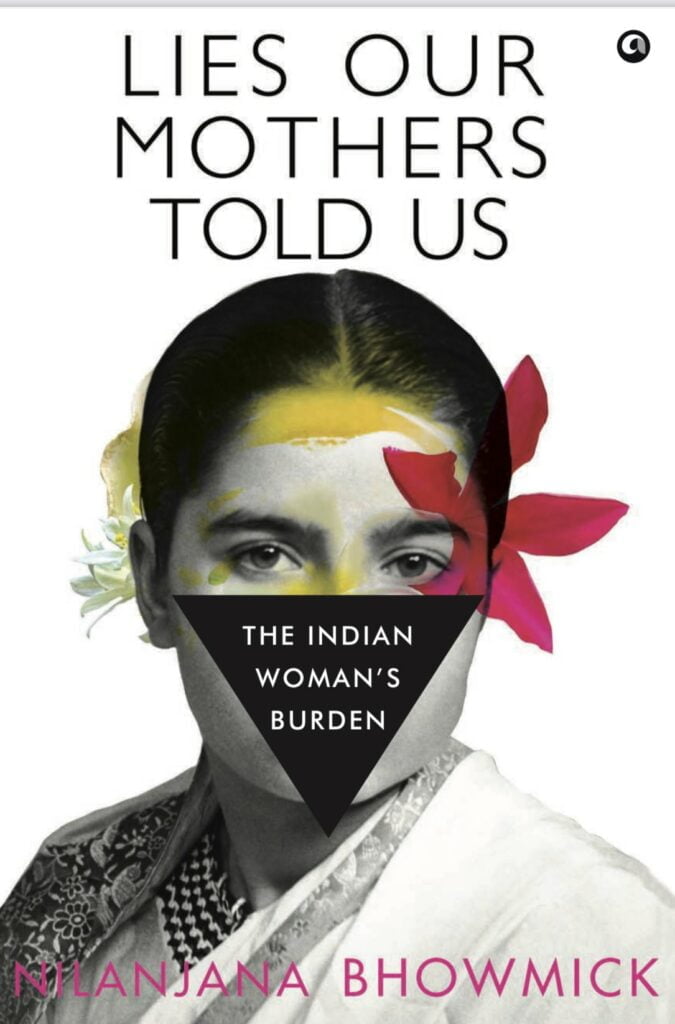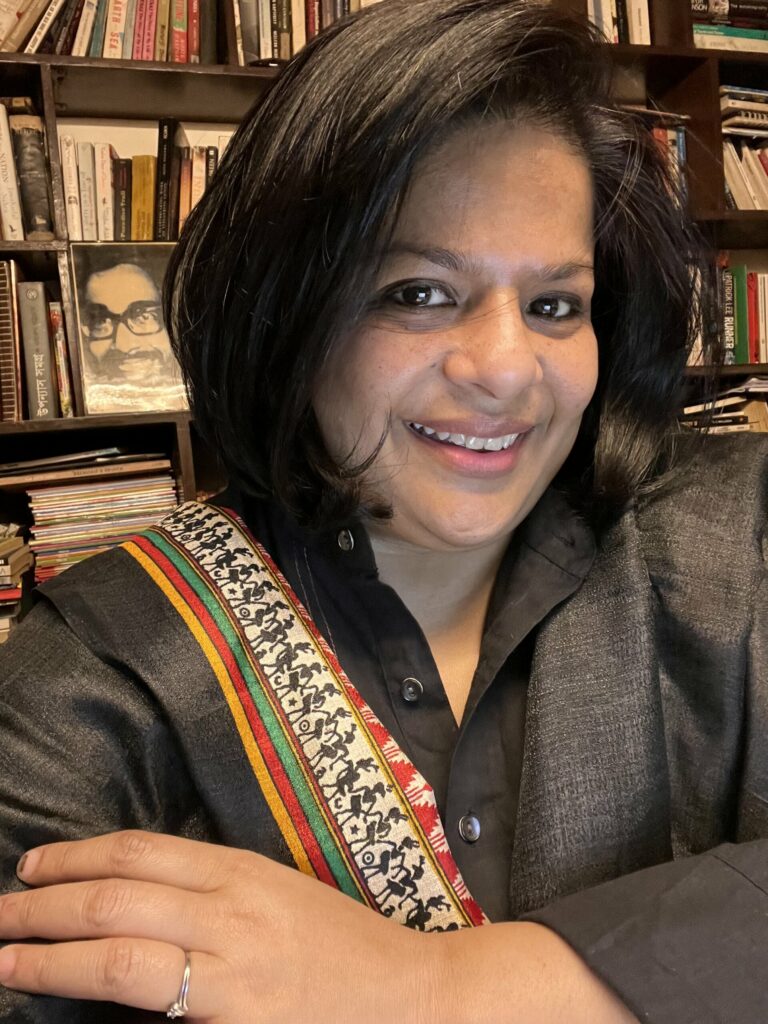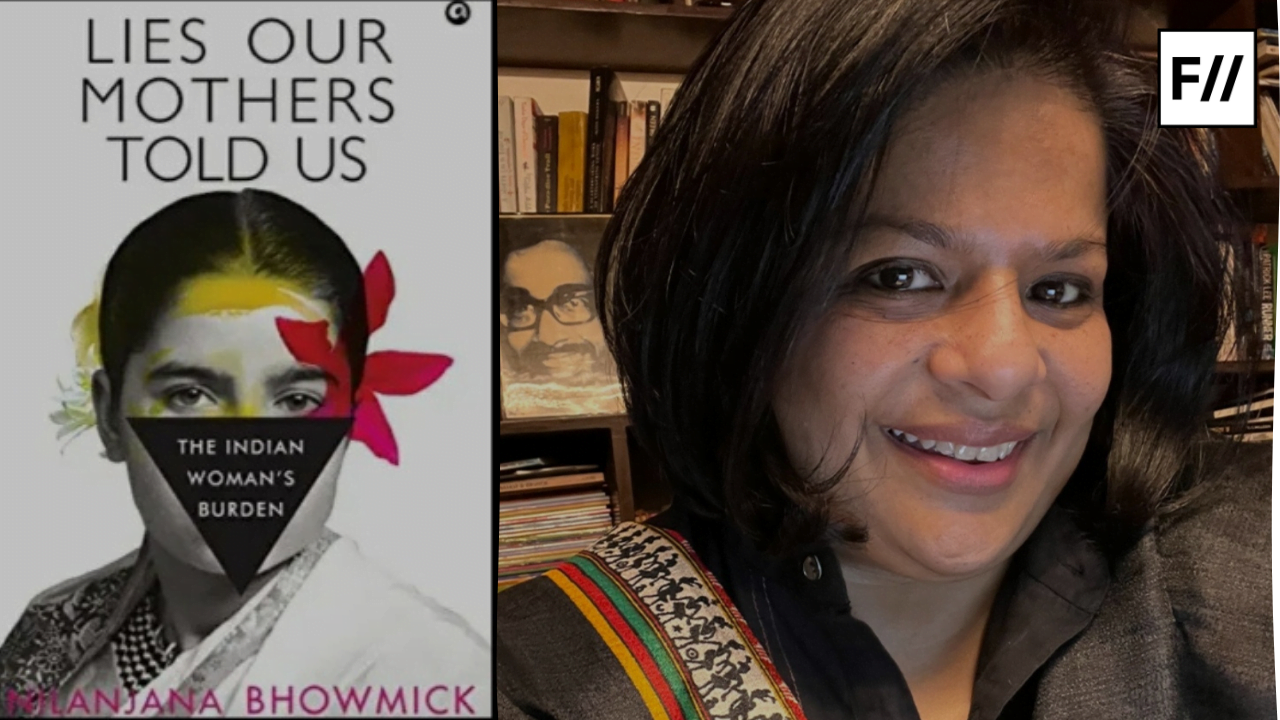When a woman first picks up Nilanjana Bhowmick’s book, ‘Lies Our Mothers Told us – The Indian Woman’s Burden’, perhaps they cannot foresee just how hard every line of the book will hit them. How the lines will resonate within the deepest corners of their being because the book, at its core, is about the lived realities of every woman. It is relatable, the book’s events can be empathised with, even subconsciously because every woman has the history of other women’s lives ingrained within her, the legacy of the past marking the presents moments, never gone, never forgotten.
The problem, as Nilanjana Bhowmick would point out in her book, lies in the data that says “Indian women are among the most overworked in the world…survey found that women spent 299 minutes per day on housework and 139 minutes on caregiving duties per day” possibly while having full time job responsibilities otherwise. ‘Lies Our Mothers Told Us’ is replete with other such alarming statistics and reveals specifically the peculiar condition of the middle-class Indian woman – women who have attained the supposed “independence” society talks about but who nonetheless continue to suffer and face the heavy burden of the burgeoning ‘superwoman’ complex.
In the introduction to the book, the author makes a very poignant statement, she writes : “I have been trying to prove that I can wear all my hats effortlessly to an invisible jury throughout my life” and what can be truer than that statement? Aren’t all women in a hetero-patriarchal society nowadays made to take on multiple roles and expected to be equally efficient in all of them, all the time? Even before, haven’t women always been asked to live up to patriarchy’s ideal expectations of them? These question are what lies at the heart of this book – what happens when women can no longer continue to fulfill society’s expectations of them? The novel is an important exploration of all the ideas that patriarchy internalizes within women, ideas that constantly evolve with time to keep women within its shackles, wrecking havoc on their minds and lives.
Standing in 2022, in the 21st century, there is one single statement that most women must have been made to hear countless number of times, ‘now that times have changed is there a need for being a feminist anymore? Aren’t most women educated and allowed to work now?’ Surprisingly even women would not fail to make such comment statements like these to other women failing to realize their inherent misogyny, ‘girls nowadays have it all, they can work, they can be independent and earn their own money, so where is the problem? Times have changed, it is no longer like before’.
Also read: Motherhood And Its Psychological Implications
The problem, as Nilanjana Bhowmick would point out in her book, lies in the data that says “Indian women are among the most overworked in the world…survey found that women spent 299 minutes per day on housework and 139 minutes on caregiving duties per day” possibly while having full time job responsibilities otherwise. ‘Lies Our Mothers Told Us’ is replete with other such alarming statistics and reveals specifically the peculiar condition of the middle-class Indian woman – women who have attained the supposed “independence” society talks about but who nonetheless continue to suffer and face the heavy burden of the burgeoning ‘superwoman’ complex.
The author does not shy away from talking about her own childhood trauma, the legacy of her mother’s and her grandmother’s sadness and how it came to affect her own life. In chapters like ‘The grandmother I never met’, she unfolds the taboo surrounding mental health issues in married women, the lack of awareness concerning pre-menopausal and menopausal depression, the high suicidal rates of women in India and the higher risks of depression and anxiety disorders that globally women tend to carry all throughout their lives.
This is a relatively new idea in this specific context. The concept of women requiring to have it all together else they are a failure or hysterical have existed since time immemorial. However, with the onset of globalisation and liberalisation in India and women being “allowed” to enter professional workplaces, the burden has increased because, not surprisingly, women have to deal with double workplaces now; the home and the world outside, one of which they are mostly never acknowledged for.

For years, women have had to internalize the fact that the domestic world must always be their number one priority and for being “allowed” freedom to work outside their domestic spaces they must prove that they are superwomen who can manage perfectly both their interior and exterior worlds. If a woman manages somehow to do that, she is praised, admired and looked up to.
The author tries to showcase through the stories she collects in her book how such insidious ideas accumulate over time and are passed down the generations by women themselves. The author confesses that even her mother tried to do the same, put on a brave face when she was struggling. Such instances are devastating because women are overworked and get put on a pedestal where all they can do is strive for the impossible perfection. The sad irony, here, lies in the fact that no matter whether they succeed or fail to live up to those expectations, they still feel burnt out, stressed, exhausted mentally and physically, and in general just tired of living their lives.
Also read: The Unspoken Aspect Of Motherhood: Indian Women And Their Struggle With Postpartum Depression
Nilanjana Bhowmick has been a journalist for many years and she has written on gender and society many times previously. Her brilliant analytical research skills are on display in this book because spread over 20 chapters, she talks about and dissects a wide range of issues afflicting the modern woman that often go unsaid or unheard because ‘women can have it all’ nowadays, can’t they? What is remarkable about the book is the great blend between personal stories and accumulated data.

The author does not shy away from talking about her own childhood trauma, the legacy of her mother’s and her grandmother’s sadness and how it came to affect her own life. In chapters like ‘The grandmother I never met’, she unfolds the taboo surrounding mental health issues in married women, the lack of awareness concerning pre-menopausal and menopausal depression, the high suicidal rates of women in India and the higher risks of depression and anxiety disorders that globally women tend to carry all throughout their lives.
The author’s personal inputs and the stories she has collected from women across all walks of life make the experiences more human, more real, something that may could not have been possible with just data. The novel also addresses all that often goes unheard in feminist movements, the stories that never see the light of the day. Capitalism, its effects upon women, the baggage of comments like women should always keep the “peace”, should go for jobs that allow for enough time and effort into their domestic worlds, are all discussed and looked into by the author’s critical eyes.
From time to time, the book might feel to be immensely pessimistic because reading about the vicious cycle of burden women are entrapped in is no happy reading; it makes you question stuff, it makes you doubtful regarding your own mindsets but above all, it makes you jarringly aware of the dark realities of life’s circumstances. But the book is not entirely devoid of hope either. It also does showcase ways women are rebelling against such deep rooted issues of patriarchy. The chapter on the housewife youtubers for example, titled ‘Documenting the housewife experience’. The work of numerous women in nationalist or other political movements are also highlighted to reflect upon women reclaiming their part in political and historical narratives in the public sphere along with stories like that of Divya and Seema’s and their reclaiming of the narrative in their personal spaces from the hands of patriarchy. The author is also putting a lot of faith in the younger generation to finally break away from the curse of mental inheritance and carve their own path to a better and happier future.
Reclamation of true freedom is perhaps the biggest utopian agenda on the path to women empowerment and the book sternly points towards it, not always optimistically but nonetheless with subtle signs of hope.
About the author(s)
Sayeri Biswas recently graduated with a bachelor’s degree in English from St. Xavier’s College, Kolkata. Whether it’s philosophically
contemplating life or gushing about the most recent book/series she has indulged in, she is always up for a deep conversation. Literature is the great love of her life, and in the future, she hopes to continue talking about all art forms as passionately as she thinks
about them.




